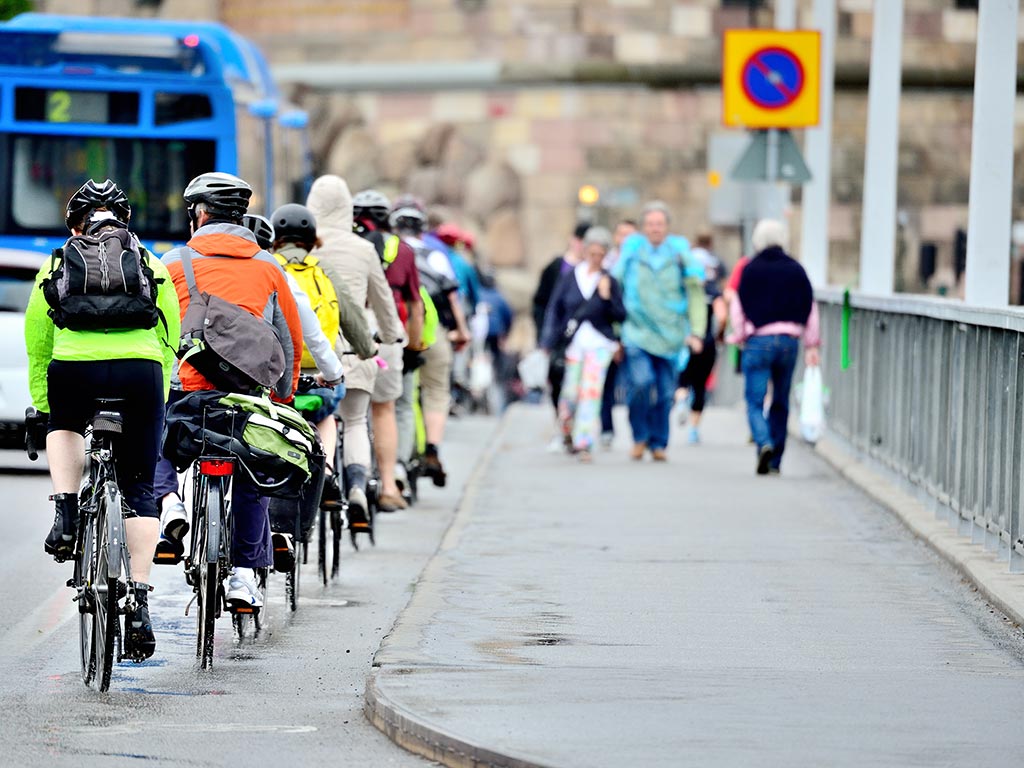Why are Green Spaces Important in Cities?
Cities, with their dense populations and industrial activities, are significant contributors to global greenhouse gas emissions. As cities continue to grow, adopting sustainable methods becomes vital for conserving natural resources, reducing pollution, and ensuring a better quality of life for residents.
Green cities lead the way in reducing the environmental footprint of humans. They do so through innovative urban planning, sustainable transportation, efficient energy use, and by fostering a culture of environmental consciousness among their residents.
In this article, we will explore the top 10 green solutions that mitigate the impacts of urbanization on the environment, leading us towards a more sustainable and eco-friendly future.
Urban Green Spaces
Urban planning today is about adding nature into our daily city life. Imagine our cities with more greenery – it means more parks, green corridors, rooftop gardens, and plants all around. These green spots are important for the city, giving us a break from city life and helping us feel close to nature.
Being around green spaces makes us feel happier and less stressed. These places encourage outdoor activities such as walking, jogging, and cycling, which are beneficial for our physical fitness. They also offer communal spaces for recreation, socializing, and events, fostering a sense of community.
Parks and green areas in cities do more than just look nice. They provide habitats for wildlife and support biodiversity. The presence of greenery also improves air quality, leading to better respiratory health for the urban population
Sustainable Transportation
Transportation is a big part of city life, and it has a huge impact on our environment. But what if we could get around in a way that's better for our planet? By changing how we travel, we can make our cities cleaner, quieter, and more enjoyable places to live. Here are some sustainable transportation options:
Public Transportation: Modern, efficient, and user-friendly public transit systems encourage people to leave their cars at home, leading to fewer traffic jams and lower greenhouse gas emissions. Investments in public transportation also create more inclusive cities by providing mobility for all residents.

Electric Vehicles (EVs): Unlike traditional vehicles, EVs operate on electricity instead of gasoline, producing zero exhaust emissions. This reduces air pollution and our dependence on fossil fuels. The increasing availability of EV charging stations in cities makes the use of electric vehicles more convenient and accessible.
Cycling and Walking: By building dedicated bike lanes and safe pedestrian pathways, cities encourage residents to opt for these healthier, zero-emission modes of transport. Not only do walking and biking reduce traffic and pollution, but they also promote physical fitness and mental well-being.
Eco-Friendly Infrastructure
The integration of energy-efficient technologies in construction has become a pivotal aspect of sustainable urban development. These technologies reduce the environmental impact of buildings, which are major consumers of energy and resources. Here are a few eco-friendly technologies:
Green Roofs: Green roofs involve covering building rooftops with vegetation, which helps in reducing heat absorption, thus lowering the need for air conditioning. This natural insulation contributes to energy savings and provides urban green space, enhancing biodiversity in the city.
Permeable Pavements: Unlike traditional pavements, permeable pavements allow water to pass through, reducing runoff and improving stormwater management. This helps in recharging groundwater and prevents the overloading of urban drainage systems during heavy rains.
Sustainable Drainage Systems: Sustainable drainage systems aim to mimic natural drainage processes, using features like rain gardens and constructed wetlands to manage surface water. These systems not only reduce the risk of flooding but also filter pollutants, improving water quality.
Renewable Energy Integration
By adopting renewable energy sources, cities can drastically cut their carbon emissions, contributing to global efforts to mitigate climate change. These energy sources can also stimulate local economies, create jobs, and reduce energy costs in the long term. Here are two ways to integrate renewable energy:
Solar Energy Projects: Solar projects can range from small-scale installations for individual buildings to large solar farms that can power entire neighborhoods. Cities can integrate solar panels on rooftops of buildings, over parking lots, and in unused urban spaces to generate clean energy.
Wind Energy Initiatives: Smaller, more compact wind turbine designs are now available, making them suitable for installation within city landscapes or on buildings. These turbines can harness the power of urban wind patterns to supplement a city's energy mix with clean, renewable power.
Conclusion - Why are Green Spaces Important in Cities?
As we continue to innovate and invest in green initiatives, cities can lead the way to building a greener, more sustainable future. Whether it's choosing to cycle to work or advocating for sustainable policies, each action contributes to a larger change.
Diversified Construction specializes in commercial construction, with over 60 years of business experience in the Twin Cities. Contact us today at 952-929-7233 if you’re looking to start a new project.

